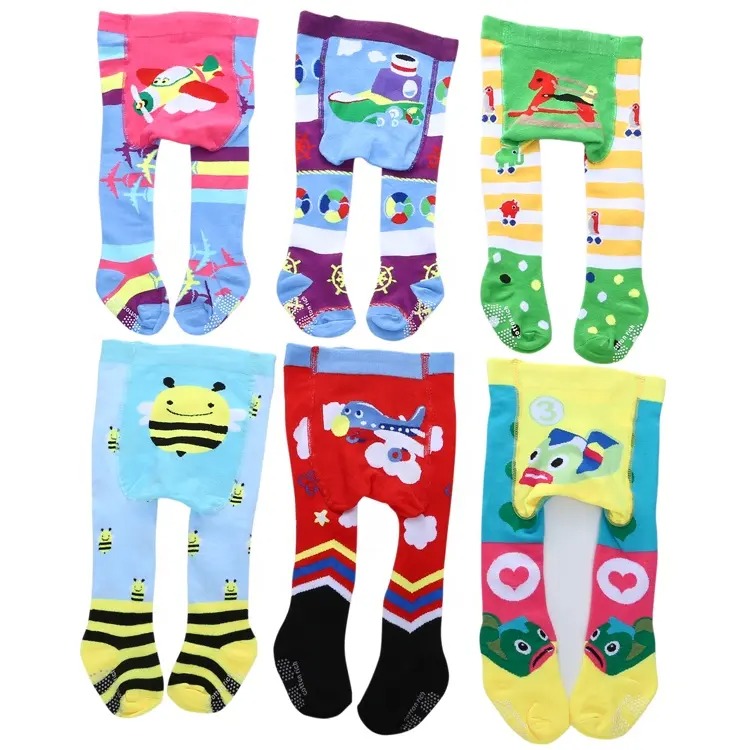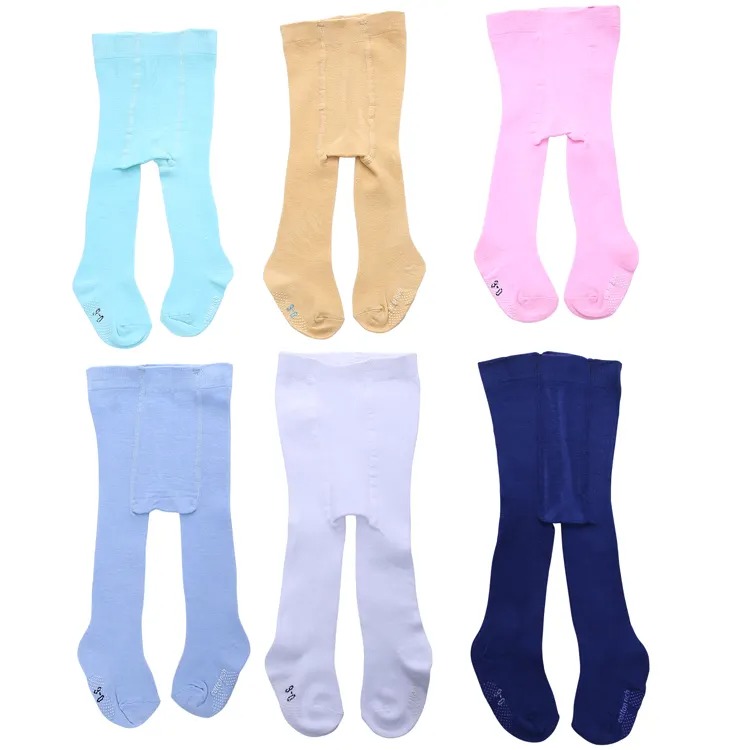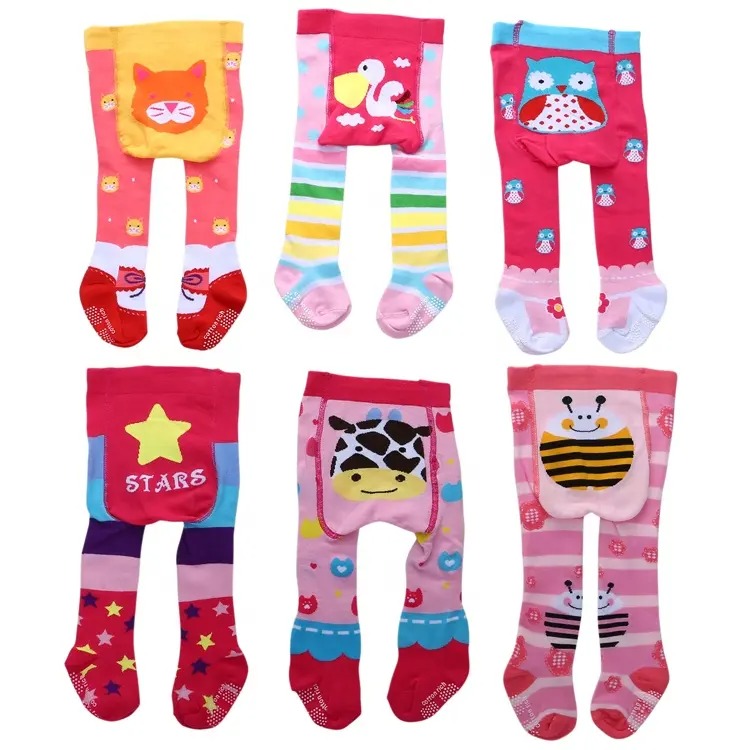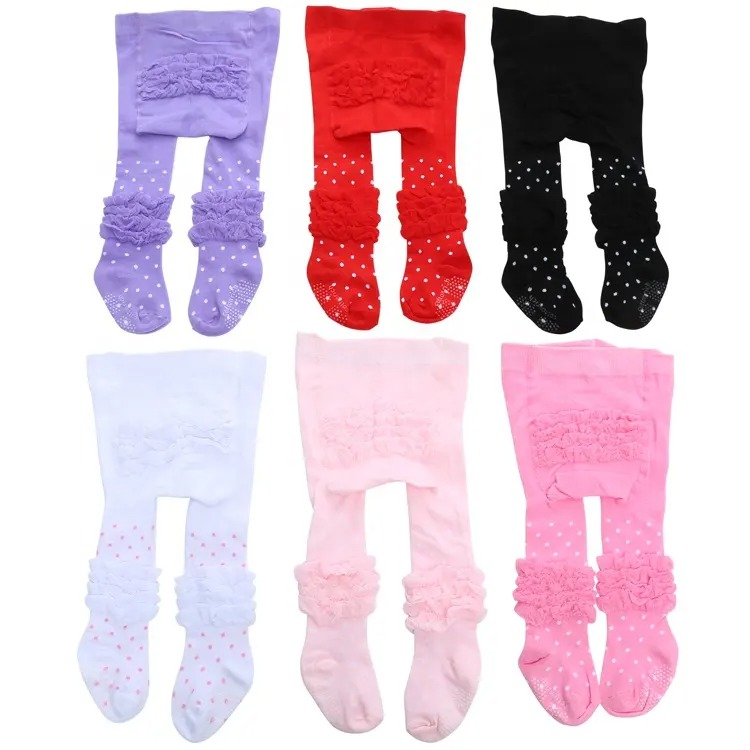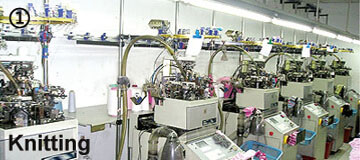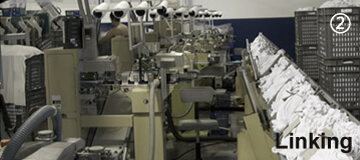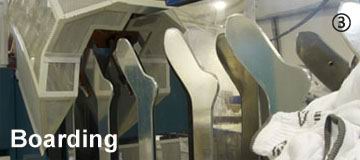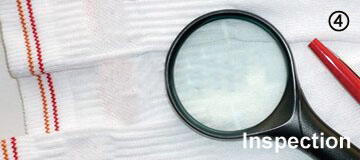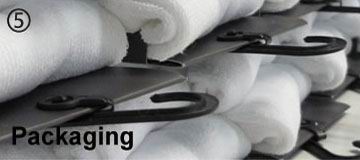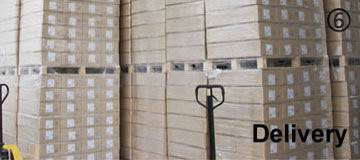Baby Tights Manufacturer
As a baby tights manufacturer with ten years of knitting experience, we are dedicated to producing high-quality baby legwear. Our facility utilizes state-of-the-art knitting technology and automated equipment to ensure consistent product quality. We offer a diverse range of materials including organic cotton, bamboo fiber, and elastic fibers, all specifically chosen for babysensitive skin. Our team is committed to innovation and continual improvement, and we look forward to partnering with you to create top-notch products that meet market demands.
1.Products
1.1 Yarn
1.1.1 Yarn Count
It mainly uses 21s and 32s yarn count.
1.1.2 Material
- Cotton. One of the most commonly used materials because it’s soft, breathable, and skin-friendly. Organic cotton is often chosen for baby socks as it avoids pesticides and chemicals, making it safer and healthier.
- Bamboo. Known for its excellent moisture absorption and breathability, and natural antibacterial and odor-resistant properties, making it an ideal choice for babytights, especially in warm climates.
- Nylon. A very durable synthetic material, often used to enhance the strength and elasticity of tights. It helps socks maintain their shape and makes them easier to put on and take off.
- Spandex. A common elastic fiber used to provide necessary stretch in tights. This material allows the socks to accommodate rapid growth and active movement of children, ensuring a good fit.
- Polyester. Often used in tights for its durability, wrinkle resistance, and quick-drying properties. It helps maintain the color brightness and stability of the socks.
- Modal. Made from natural wood cellulose, modal is very soft, silky to the touch, and skin-friendly. Its excellent moisture absorption and softness make it a premium choice for babytights.
- Wool. A great material for cold weather due to its natural heat retention. For baby socks, specially treated superfine wool is often used to minimize potential skin irritation.
1.2 Jacquard
It is mainly divided into single-sided colored yarn jacquard, double-sided colored yarn jacquard, and concave-convex pattern jacquard.
-
1.2.1 Single-sided colored yarn jacquard is provided by one or more auxiliary yarn ports in addition to the main yarn supply port on a single-cylinder sock machine, and is controlled by jacquard equipment to form patterns.
-
1.2.2 Double-sided colored yarn jacquard is made by passing more than two main yarns of different colors through the jacquard mechanism on a double-cylinder sock machine, and controlling the knitting needles to eat the yarn and form a loop to form a pattern.
-
1.2.3 Concave-convex jacquard is a relief-like pattern formed by alternately knitting the front and back loops of the fabric on a double-cylinder sock machine. It can also enhance its three-dimensional effect by revealing different colors in the front and back loops.
1.3 Needles
1.3.1 96 Needles (96N)
A common choice for making basic and simple baby socks. This needle count ensures enough delicacy for comfort while keeping costs reasonable.
1.3.2 120 Needles (120N)
Used for making finer texture and more detailed patterns in babytights. Ideal for toddlers due to their softer feel and suitability for sensitive skin.
1.3.3 144 Needles (144N)
Suitable for the premium market, 144 needles provide higher knitting density, making the tights more durable and comfortable. Often used for intricate designs and high-quality materials.
1.4 Pattern
There are mainly stripes, plaids, flowers, animals and other patterns.
2.Manufacturing
The process is sampling, knitting, linking, boarding, inspection, packaging, etc.
2.1 Sampling
Before bulk production, we create a technical sheet that contains are the information to produce the desired baby tights. Sample pairs are produced and sent to client for quality, size, color, drawings and other elements confirmation. We only start production when the samples are approved. If required we can perform test reports.
2.2 Knitting
After the sample is confirmed, we produce the order as per the established specifications and requirements. At present, we have 6 skilled mechanics, 30 experienced knitters, and 80 computerized sock machines. The sock machines are equipped with single and double syringes of different gauges and needles.
2.3.1 Toes Linking
Straight Blind Stitching. This method uses a straight sewing machine, uses overlock stitching, and wraps the sock toe coil with stitches to produce a relatively flat sock toe.
Manual Cross-Stitching. This method uses a round socks machine, and the stitched socks toe coils are sequentially put on the needle of the sewing machine to sew. The socks toe produced has no ribs.
2.3.2 Crotch Linking
Precisely cut front and back pieces according to the tights design, ensuring the alignment is accurate to maintain comfort and aesthetics in the crotch area. Crotch stitching usually involves flatlock or coverstitch machines to create seams with high strength and elasticity, complemented by elastic threads to enhance overall flexibility and adaptability. Flatlock seams are a common choice as they remain smooth on both the inside and outside of the tights, preventing irritation on sensitive babyskin.
2.4 Boarding
All baby tights pass through are boarding machines to give them a clean look and feeling before being packed. There are 1 rotary electric steam boarding machine, which is generally used for setting short socks, and 2 hanging electric steam boarding machines, which are suitable for all types of socks.
2.5 Inspection
Quality inspection takes placed in every step of the production process and the most thorough product quality inspection takes placed right before packaging in order to guarantee that no baby tights are defective or contaminated. Quality inspections can be arranged with external entities.
2.5.1 Formaldehyde Content.
Class A products ≤ 20mg/kg, which refer to products used by infants and young children. Class B products ≤ 75mg/kg, which refer to products that come into direct contact with the skin when worn.
2.5.2 Ph Value
4.0-7.5, it can be understood that Class A and Class B products should be in this range (there are no Class C products in baby tights).
2.5.3 Stitching Integrity
Inspect all stitching areas, including the crotch and sock head, to ensure seams are strong without any risk of unraveling or breaking. Check for excess material or threads in the crotch area.
2.5.4 Decomposable (carcinogenic) Aromatic Amine Dye
Disable. Some dyes are harmful to the human body and even cause canceration, such as azo dyes, the standard stipulates that the use of these dyes should be prohibited, and the detection limit should be ≤ 20mg/kg.
2.5.5 Color Fastness to Water
It refers to the change of color fastness of baby tights after exposure to water. According to the test of discoloration and staining, class A products ≥ grade 4, class B products ≥ grade 3.
2.5.6 Color Fastness to Acid and Alkali Perspiration
The change of color fastness of baby tights in the presence of acidic or alkaline sweat can be divided into discoloration and staining tests, class A products ≥ grade 4, class B products ≥ grade 3.
2.5.7 Color Fastness to Dry Friction
The change of color fastness of baby tights under the condition of non-wetting and friction at room temperature: class A ≥ grade 4, class B ≥ grade.
2.5.8 Color Fastness to Saliva
It refers to the change of color fastness of baby tights when they encounter saliva. Divided into discoloration and staining test, Class A products ≥ grade 4, Class B products are not tested.
2.5.9 Post-Wash Dimensional Stability
Test the dimensional stability of products after washing to ensure they maintain their shape and size.
2.6 Packaging
After passing quality inspection, it will be packaged according to customized requirements. At present, there are packaging cardboard, cardboard bags, cartons and other types of packaging. It involves packaging materials such as packaging cardboard, cardboard bags, cuff labels, size stickers, baby tights hangers (paper cards), waist seals, packaging hooks, sock toe/cuff fasteners, outer packaging cartons and other packaging materials.
3. Problem and Solution
The process is sampling, knitting, linking, boarding, inspection, packaging, etc.
3.1 Color Variance
3.1.1 Problem
Inconsistency in colors or fading is a common issue in textile production, especially when using multiple colors and in large-scale production.
3.1.2 Solution
Strengthen the color management system, use high-quality dyes and advanced dyeing technologies. Conduct thorough, rapid color tests before production to ensure colorfastness meets industry standards.
3.2 Poor Stitching
3.2.1 Problem
Poor stitching can lead to weak product structure and damage, especially during active wear by children.
3.2.2 Solution
Use high-quality sewing threads and advanced stitching equipment. Regularly maintain equipment to ensure it operates efficiently. Conduct regular quality control checks and enforce strict monitoring on the production line.
3.3 Loss of Elasticity
3.23.1 Problem
Loss of elasticity can make baby tights uncomfortable to wear and less adaptable to baby’s activities.
3.3.2 Solution
Choose high-quality elastic materials, such as top-grade spandex or synthetic fibers with good recovery properties. Control the heat treatment process during production to avoid overheating.

